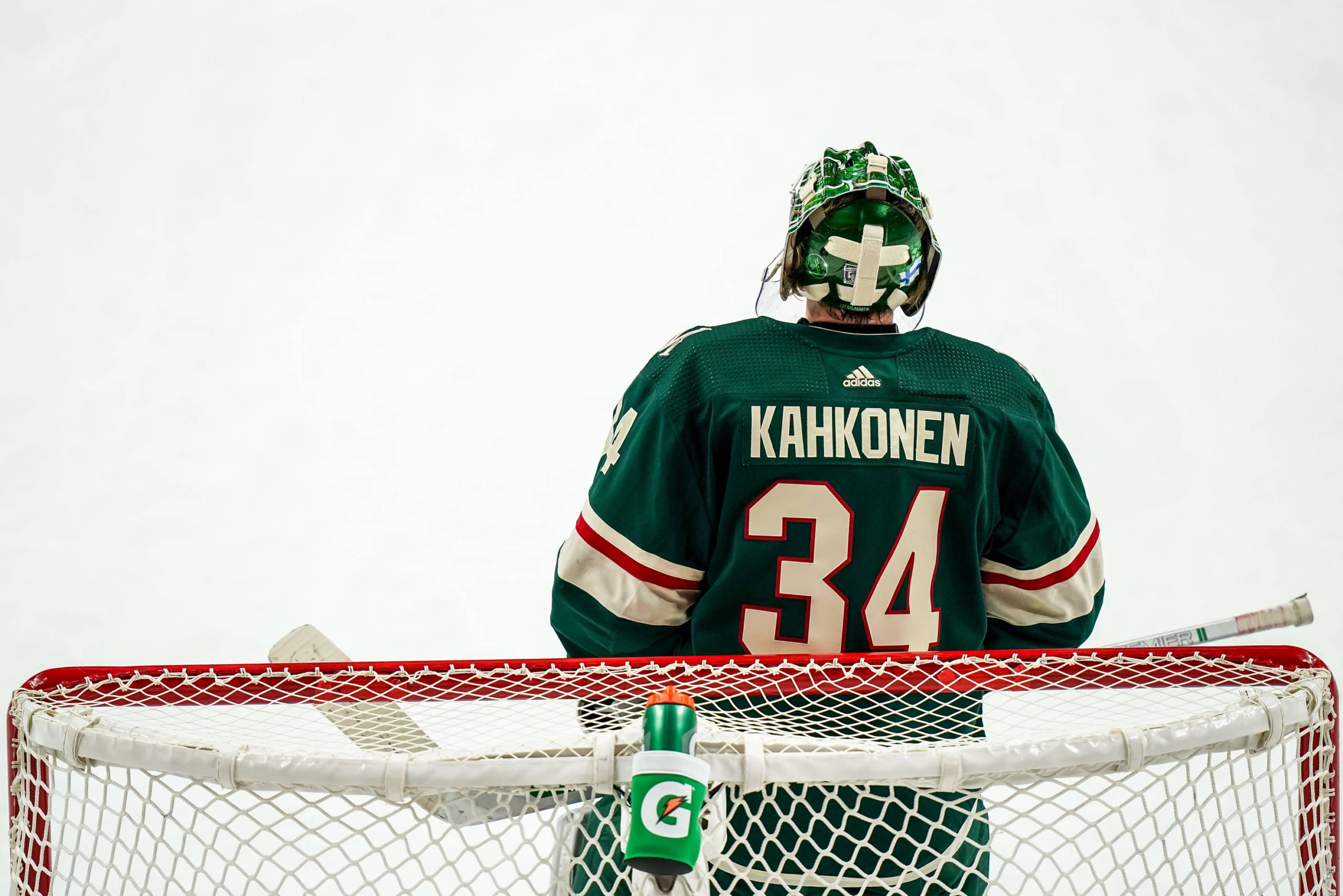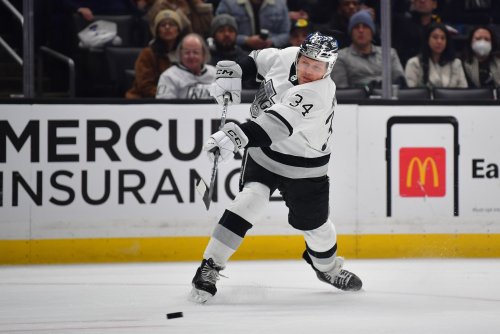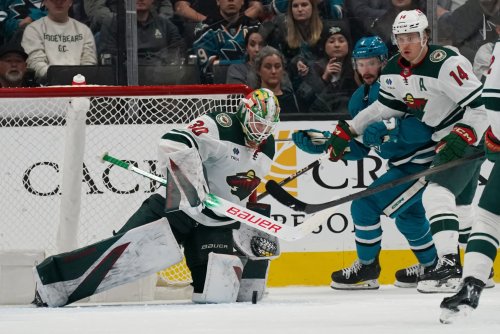
What different about the Minnesota Wild this year?
Ask most Wild fans, and they’ll probably tell you the excitement that comes with Kevin Fiala and Kirill Kaprizov. It’s true they’ve both been electric this year, but it surprisingly hasn’t translated to more offense for Minnesota. They’re sixth in the NHL this year with 2.76 goals per hour. Last year, they were fifth with 2.82.
Their defense is as rock-solid as ever, allowing 2.03 expected goals per game, virtually identical to last year’s mark. So what’s the difference between this Wild team — second in the West with a .625 points percentage — and the team that was 10th in their conference the year before?
By process of elimination, it’s the goaltending. General manager Bill Guerin set out to improve the Wild’s 29th-ranked goaltending by signing veteran Cam Talbot. Out went Devan Dubnyk, who went into staggering decline over the past two seasons. Alex Stalock, who went 9-3-1 with a .924 save percentage down the stretch to propel Minnesota to a playoff qualifier berth, would back up.
Those plans went awry quickly. Stalock is sidelined due to an upper-body injury, necessitating 24-year-old rookie Kaapo Kahkonen to take his place. An injury, then illness to Talbot has required him to take 10 of the Wild's 16 starts in net.
Even the injuries can’t hold the team back, though. The Wild sit at ninth in the league with a .918 save percentage, with both their goalies performing well. Let’s take a deeper look into this development in net.
Kahkonen Answers the Bell
For years, the Wild were built as a one-goaltender team. From 2007-08 to 2012-13 Niklas Backstrom started 321 of 458 games (70%), only failing to reach 60% of Minnesota’s starts once. Devan Dubnyk was even more of a workhorse, starting 321 of 438 (73%) of games between his arrival and departure.
The plan with Talbot was likely similar. He was brought in to be the clear starter and had experience carrying the load during his time in Edmonton. This bore out in the first five games, with Talbot getting four of the first five starts of the season.
Then Talbot sustained a lower-body injury against the San Jose Sharks. Kahkonen finished the game, turning away all 17 shots from San Jose en route to a win in relief. In four starts while Talbot was out, however, Kahkonen looked shaky. He stopped 51 of 56 shots in a split against the Los Angeles Kings but surrendered four goals to San Jose, then got blown out in a 5-1 loss to the Colorado Avalanche. Talbot then took the reins for the next two games, until he was placed on the COVID protocol list.
With Talbot out again, the Wild needed Kahkonen to step up in a way he hadn’t fully done in his first stint. This time, he’s done it. After a 4-0 loss to the Kings behind a depleted team, he’s gone on a four-game winning streak. Kahkonen hasn’t been merely feasting off goal support, he’s been lights-out. He’s got a .945 save percentage during that streak, including games against the Sharks and Avalanche — teams that blew him out earlier.
He’s clearly the hot hand. This creates questions for Talbot, who’s healthy and waiting for his turn in net.
Sharing the Net
What happens now? Both goalies are performing very well, albeit in small sample sizes. Talbot is 3-2-0 with a .920 save percentage, while Kahkonen is 7-4-0 with a .917. Does Minnesota start Talbot against LA on Friday, or will they try countering the red-hot Kings with the red-hot Kahkonen?
Fortunately, these aren’t problems. Not at all! Having two reliable goalies is where the league is headed, and it’s about time the Wild joined this bandwagon. Teams like the Dallas Stars, Vegas Golden Knights, and Boston Bruins have had success in splitting the workload.
Deploying a tandem in net makes all the sense in the world for both Talbot and Kahkonen. For Talbot, it’s a matter of keeping the 33-year-old fresh, and not just for this season. Talbot is signed for two more years in Minnesota, and in order to get maximum value, he can’t be overworked. Remember, his play suffered after starting 193 games in his first three years in Edmonton.
As for Kahkonen, an even split between him and Talbot makes sense in two ways. The first is that he’ll actually get minutes. He’s a developing goaltender who was slated to get a significant workload in Iowa this year. Languishing behind Talbot isn’t the best way for him to grow, especially since he’s showing well in the NHL.
Then there’s the fact that Kahkonen has a history of being streaky in the minors. In his first AHL season, he started hot, then slumped his way out of a starting gig. Last year he rode a scorching second-half all the way to being the AHL’s Goalie of the Year. In a tandem, Minnesota can ride him when he’s going, and rely on Talbot when Kahkonen’s game starts to wane.
What About Stalock?
The Wild’s goalie situation might find its way to complication sometime soon this season. Even if Minnesota does use Talbot and Kahkonen as a tandem, there’s still the matter of Stalock. He’s resumed skating again, and while his return isn’t imminent, it will create questions.
It’s fair to expect Stalock to re-enter the lineup once he’s healthy. After all, he was supposed to be the backup before he was injured. Should he lose his job because of it? Not to mention, it was him who got Minnesota into a playoff position down the stretch.
At the same time, if Talbot and Kahkonen’s play holds, how can Minnesota justify breaking them up? Granted, the Wild’s goalies are maybe not as good as their save percentages suggest. Minnesota’s impeccable defense makes life easy on netminders, and save percentage doesn’t account for that defense. A stat like Evolving Hockey’s Goals Saved Above Expected does, however. It has Talbot as surrendering 0.32 more goals than he “should,” and Kahkonen at -0.11.
So, right about average. Which, for the Wild, is leagues better than any goaltending they’ve had since Dubnyk’s heyday. Despite Stalock providing stability in comparison to Dubnyk’s implosion, he still surrendered a whopping 16 more goals than expected in just 38 games.
Injuries and dips in performance can change things, but Talbot isn’t going anywhere and Kahkonen is in Minnesota’s future plans. In both the short and long term, keeping this duo together and giving them equal playing time is in the best interest of the club.
Think you could write a story like this? Hockey Wilderness wants you to develop your voice, find an audience, and we'll pay you to do it. Just fill out this form.






Recommended Comments
Join the conversation
You can post now and register later. If you have an account, sign in now to post with your account.
Note: Your post will require moderator approval before it will be visible.